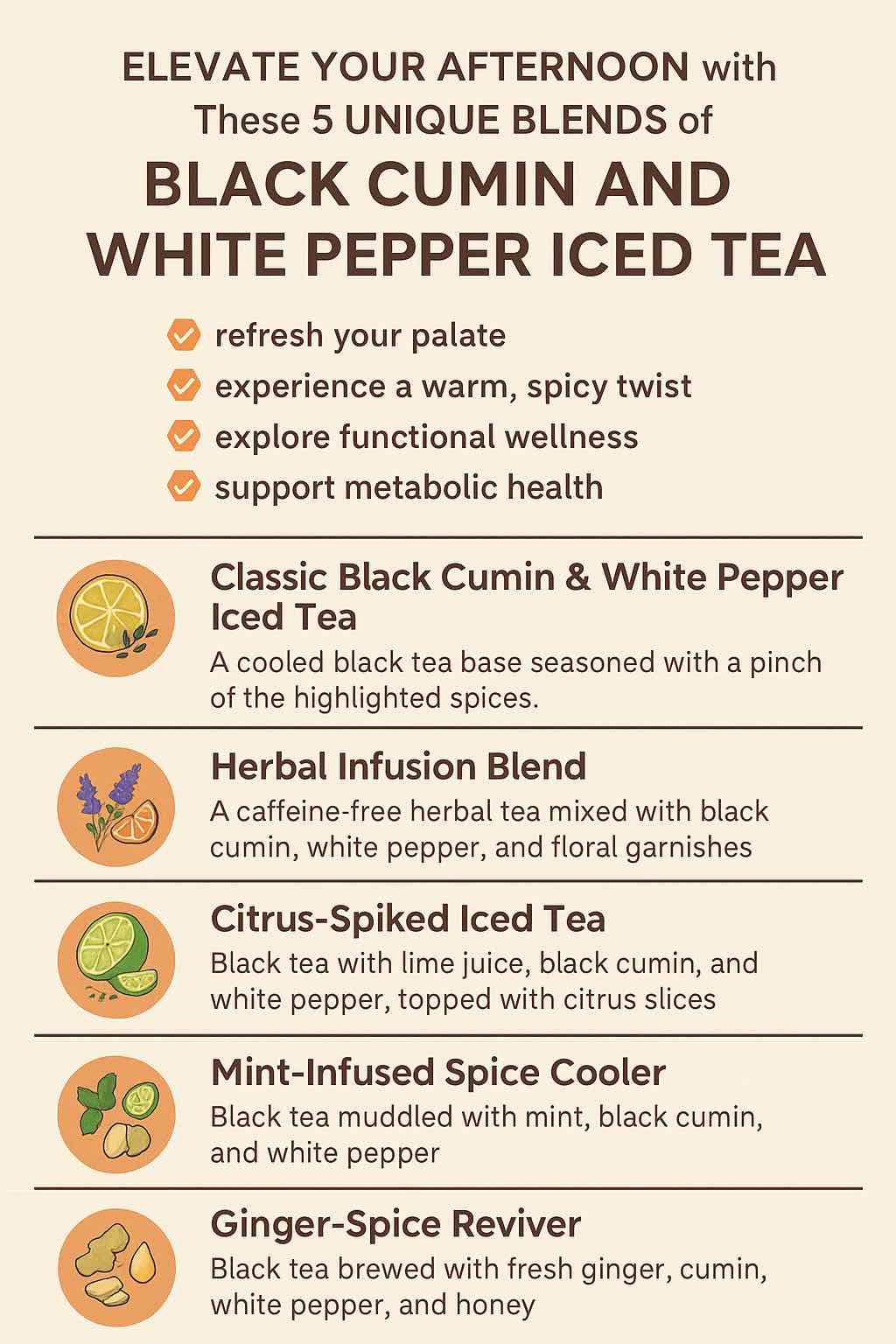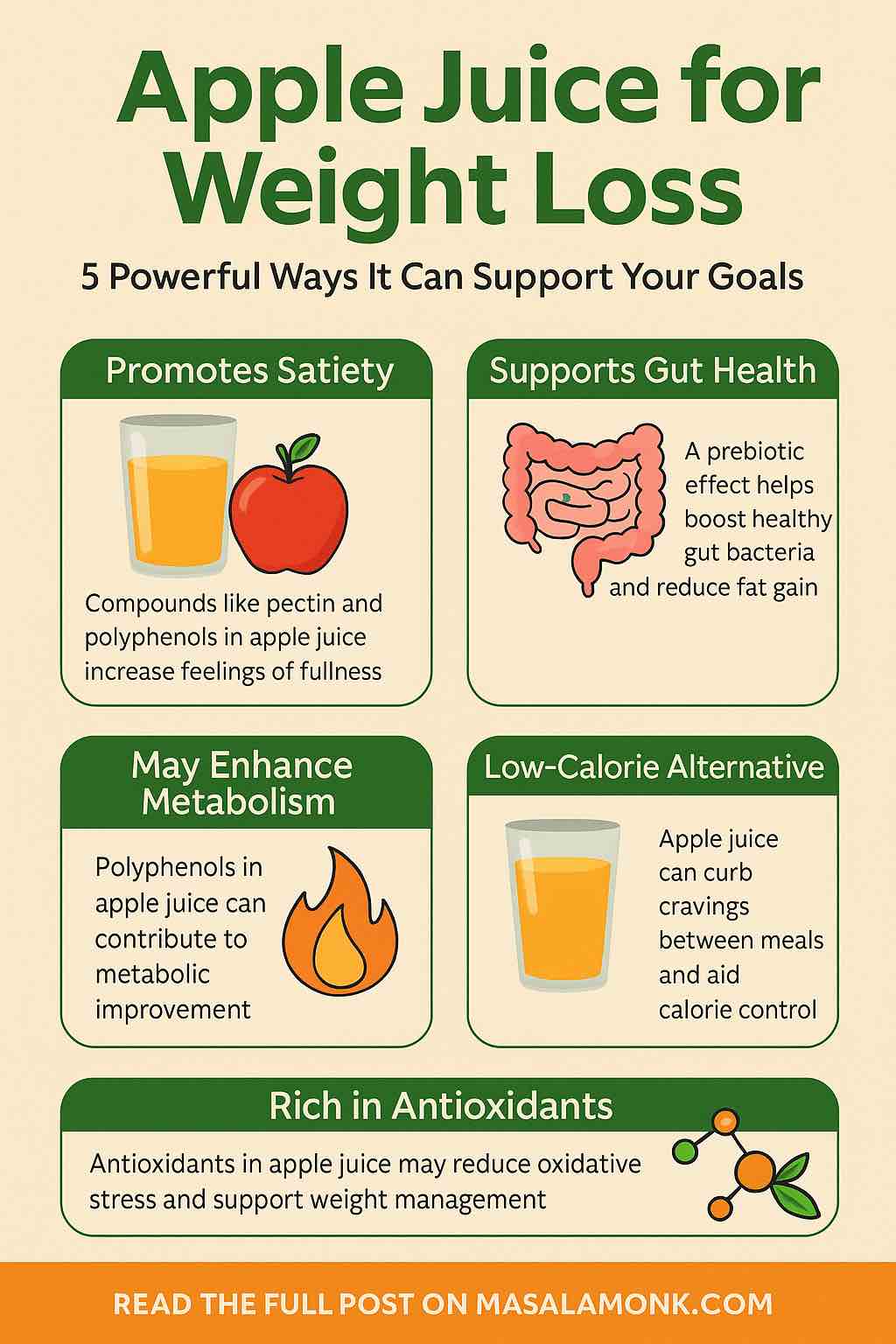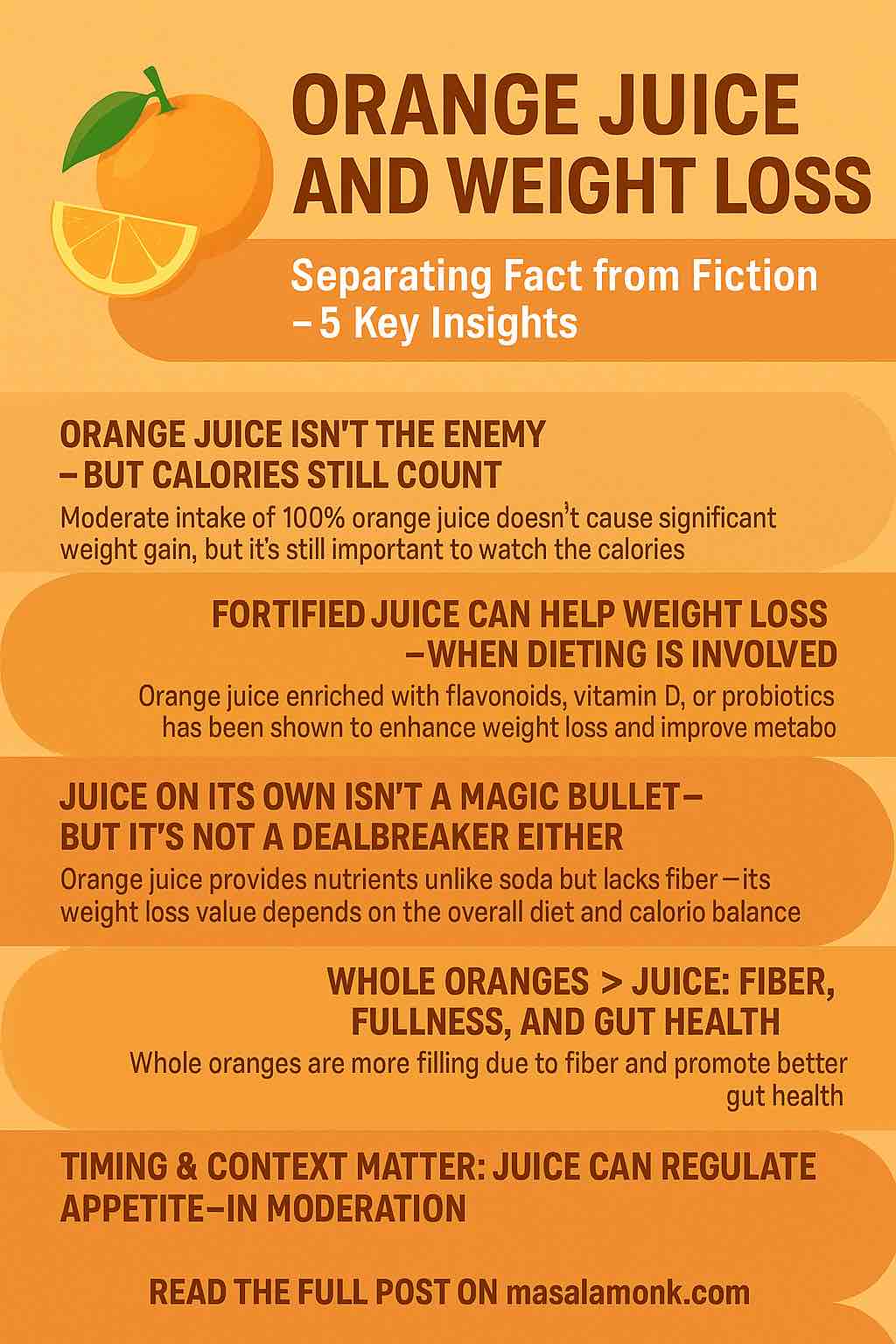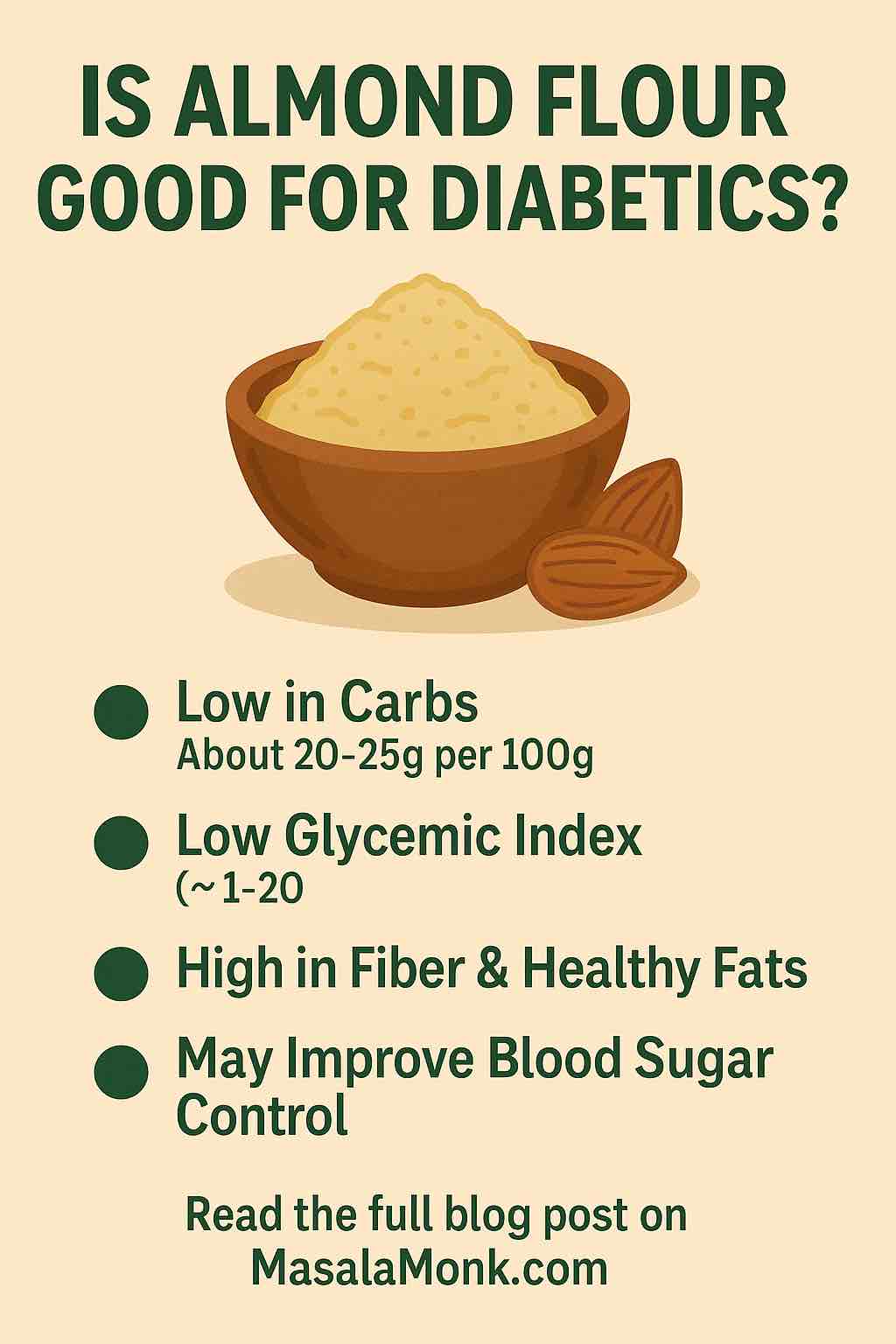
In a world where every sip counts, why settle for plain iced tea when you can invigorate your senses and support your health with bold, spice-infused blends? Welcome to a new wave of wellness beverages: Black Cumin and White Pepper Iced Teas. Drawing on the latest research and traditional wisdom, these drinks don’t just refresh — they rejuvenate, offering a rich interplay of flavor and function.
Why Black Cumin and White Pepper?
Black cumin (Nigella sativa) has been used in traditional medicine for centuries. Recent studies (2023-2025) have shown that black cumin seeds are packed with bioactive peptides, antioxidants, and anti-inflammatory compounds such as thymoquinone, which support immune function, glucose control, and stress management.
White pepper, on the other hand, contains piperine, a compound that boosts absorption of nutrients and enhances digestion, blood sugar regulation, and circulation. Together, these spices form a potent base for an energizing, functional iced tea.
Here are five unique and practical blends to spice up your afternoons while boosting your well-being.
1. Classic Black Cumin & White Pepper Iced Tea
Ingredients:
- 2 cups of brewed black tea (cooled)
- 1/2 tsp toasted and crushed black cumin seeds
- 1/4 tsp ground white pepper
- Lemon slice and mint for garnish
- Optional: 1 tsp honey or jaggery syrup
Method:
- Brew black tea and allow it to cool.
- Toast cumin seeds lightly, then crush.
- Mix cumin and white pepper into the tea.
- Strain the mixture to remove solids.
- Serve over ice with lemon and mint.
Flavor Profile: Earthy, peppery, slightly citrusy. Perfect for a mid-day pick-me-up.
2. Herbal Tranquility Infusion
Ingredients:
- 2 cups chamomile or hibiscus tea (cooled)
- 1/4 tsp ground black cumin
- A pinch of ground white pepper
- 1 small sprig of lavender or orange peel
Method:
- Brew herbal tea and cool.
- Stir in the spices.
- Add lavender or orange peel for a soothing aroma.
- Strain and pour over ice.
Health Benefit: A stress-reducing, gut-soothing blend ideal for late afternoons.
3. Citrus Zest Refresher
Ingredients:
- 2 cups brewed green or black tea
- Juice of half a lime or grapefruit
- 1/4 tsp ground black cumin
- 1/4 tsp white pepper
- Orange or lime slices
Method:
- Mix citrus juice with brewed tea.
- Stir in the spices.
- Strain and chill.
- Garnish with citrus slices.
Perfect For: Hot summer days when you need something zesty with a functional twist.
4. Minted Spice Cooler
Ingredients:
- 2 cups black or green tea
- 10 fresh mint leaves
- 1/2 tsp crushed cumin seeds
- 1/4 tsp white pepper
- Cucumber slice (optional)
Method:
- Muddle mint with cumin and pepper.
- Add to brewed tea.
- Steep 10 mins, then strain.
- Chill and serve with cucumber garnish.
Flavor Note: Refreshing and cool with a hint of heat.
5. Ginger-Pepper Reviver
Ingredients:
- 2 cups brewed black tea
- 1 tsp fresh grated ginger
- 1/4 tsp black cumin
- 1/4 tsp white pepper
- 1 tsp honey (optional)
Method:
- Infuse ginger in hot tea, let cool.
- Stir in cumin and white pepper.
- Strain, chill, and add honey if desired.
Best For: Mornings-after or when your energy dips mid-afternoon.
Research-Inspired Tips
- Cold Brew Base: For a smoother, less bitter flavor, cold-brew your tea overnight.
- Spice Balance: Start with small spice amounts, then adjust based on your taste tolerance.
- Health Boost: Piperine from white pepper enhances the absorption of thymoquinone and other antioxidants in black cumin.
- Functional Sweeteners: Use jaggery, agave, or stevia for added health benefits.
Final Thoughts
These five blends showcase the versatility and power of spice-infused iced teas. With the latest scientific validation supporting their health claims, black cumin and white pepper are more than just pantry staples — they are wellness allies. Try these combinations to elevate your afternoon, one delicious, rejuvenating sip at a time.
Frequently Asked Questions (FAQs)
1. What is the difference between black cumin and regular cumin?
Black cumin (Nigella sativa) is a different species from regular cumin (Cuminum cyminum). It has a more bitter, pungent taste and is known for its medicinal properties like thymoquinone content, while regular cumin is warmer and nuttier.
2. Can I use black pepper instead of white pepper in these recipes?
Yes, but white pepper has a more delicate heat and slightly fermented flavor that works better in cold infusions. Black pepper is stronger and more pungent, which may overpower subtle tea notes.
3. Is it safe to consume black cumin and white pepper daily?
In moderate amounts, both are safe for most people and have been used traditionally. If you’re pregnant, breastfeeding, or on medications (especially blood thinners or diabetes meds), consult your doctor before frequent use.
4. Where can I buy high-quality black cumin and white pepper?
Look for organic, whole-seed options from trusted spice suppliers. For black cumin, confirm it’s Nigella sativa and not Bunium bulbocastanum (which is sometimes sold under the same name).
5. How long can I store these iced tea blends?
These iced teas can be stored in a sealed container in the refrigerator for up to 3 days. Always shake before serving as spices may settle.
6. Can I sweeten the tea without affecting the health benefits?
Yes. Use natural sweeteners like honey, jaggery, or stevia. Avoid refined sugars to maintain the tea’s functional benefits.
7. Can I use these blends for detox or digestion support?
Absolutely. Black cumin supports liver health and digestion, while white pepper enhances nutrient absorption. Many people use these teas post-meal or as a gentle digestive.
8. What’s the best time of day to drink these teas?
Mid-morning to mid-afternoon is ideal. Avoid drinking spicy blends late at night if you’re sensitive to heat or have acid reflux issues.
9. Can I make a large batch for a party or gathering?
Yes. Multiply ingredients accordingly and strain well. Serve in a glass dispenser with ice and fresh garnishes like citrus or mint.
10. Are these blends caffeine-free?
Only the herbal blends (like those made with chamomile or hibiscus) are caffeine-free. Black and green tea bases contain moderate caffeine.













